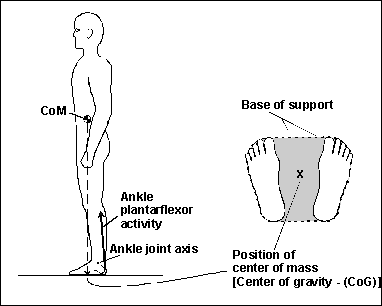Unit Summary #4
We started this unit with the concept of Rotational Inertia. Before we explain what Rotational Inertia is lets have a refresher of what inertia alone is.
Inertia = the property of an object to resist changes in motion
Now that we have been reminded of what inertia is, lets look at Rotational inertia.
Rotational Inertia = the property of an object to resist changes in spin
One factor that has a great impact on rotational inertia is the location of mass. For example:

When the mass is placed closer to the axis of rotation it is easier to rotate
Conservation of angular momentum (otherwise known and rotational momentum) states that the angular momentum before is equal to the angular momentum after. But what is angular momentum?
Angular momentum = rotational inertia x rotational velocity
Here is a video that my group made explaining this concept.
Conservation Of Angular Momentum
Angular momentum = rotational inertia x rotational velocity
Here is a video that my group made explaining this concept.
Tangential and Rotational Velocity
Have you ever wondered how trains stay on the tracks when they take a curve? No, you haven't? Well to bad, you're going to learn about it anyways. There are two major factors that keep the train on the tracks: Rotational Velocity, and Tangential Velocity.
Rotational Velocity = how fast something rotates around its axis of rotation.
Tangential Velocity = How fast something would be moving it were traveling in a straight path.

Take a look at this photo. Do you see how the wheels are connected by the axle and do not rotate independently. Also notice how the wheels are shaped. How they taper, being wider on the inside and smaller on the outside.
Because the wheels are connected by an axle, they have the same rotational velocity. however, different parts of the wheels have different tangential velocities.
The parts of the wheel that are wider have so spin faster (thus having a greater rotational velocity) in order to keep of with the skinny parts of the wheels who do not have to go as fast to have the same rotational velocity.
So when the train comes into a curve, one side has its wheels touching the tracks with only its slower spinning narrow portion. And the other has its wider and faster spinning parts of the wheels touching the track. What this causes is the wheels that are on the side of the train spin faster, and push the train back into the center of the tracks.
Torque
Torque is a force that causes an object to rotate. In case you did not know, when you fall over you are actually rotating and this is all about torque. But what is torque?
Torque = Force x Lever Arm
What this equation tells us is that you can achieve a large torque either by a large force, or by a large lever arm.
When you are trying to rotate a difficult bolt with a wrench. You are already applying as much force as you can so what can you do to generate more torque? If you said lengthen the lever arm then you are correct. Because we know that torque = force x lever arm we can increase the torque on the bolt by adding a pipe to the end of the wrench, or by getting a longer wrench.
Another thing torque is responsible for is balance.
Balance is achieved when the counter-clockwise torque = the clockwise torque.
Because torque can be hanged by either force or lever arm, the forces nor lever arms have to be equal in order to balance. All that is required is that their product on each side of the axis of rotation are equal to each other.
Center of Mass
Center of mass = average position of all an objects mass. Also called the center of gravity, the center of mass is very important when it comes to things falling over or not falling over. For something to fall over, it must have its center of mass outside of its base of support.

When a person is standing as this man in the picture is, they do not have a very wide base of support meaning that they would not have to rotate very far in order to place their center of gravity outside of their base of support.
A famous example of this is the leaning tower of Pisa.
.
As we can see. The tower is leaning a great amount, however it is not falling over because it still has its center of mass inside of its base of support.
No comments:
Post a Comment